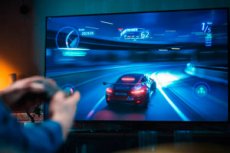New publications
Games Activate, Social Media Defocus: fNIRS Data
Last reviewed: 09.08.2025

All iLive content is medically reviewed or fact checked to ensure as much factual accuracy as possible.
We have strict sourcing guidelines and only link to reputable media sites, academic research institutions and, whenever possible, medically peer reviewed studies. Note that the numbers in parentheses ([1], [2], etc.) are clickable links to these studies.
If you feel that any of our content is inaccurate, out-of-date, or otherwise questionable, please select it and press Ctrl + Enter.

How exactly short bouts of screen activity affect the frontal lobes of the brain and mood in young people is still poorly understood. Scientific Reports presents an experimental study showing that different types of screen content (social media, video games, TV) change hemodynamics in the dorsolateral prefrontal cortex (dlPFC) differently within 3 minutes and are associated with differences in perceived focus. The authors emphasize that the effect is not universally “harmful” or “helpful,” but depends on the context and content.
Research methods
- Design: pseudo-random crossover (August–September 2024).
- Participants: 27 healthy young adults (18–25 years).
- Exposures: Six consecutive 3-minute screen-based use conditions (watching TV clips, social media, playing a video game) presented on iPhone 12 Pro Max while seated.
- Neuroimaging: portable fNIRS (Portalite MKII) recording HbO, HbR, and HbT over the dlPFC (10–20 F3/F4 points). The 2 s pre-stimulus and first minute of exposure were analyzed.
- Self-assessment: visual analogue scales before/after each condition (energy, tension, focus, mood/happiness).
Key Results
- Oxygenated hemoglobin (HbO): the increase is greatest after social media, then games, the least with TV (compared to baseline).
- Deoxyhemoglobin (HbR) and total Hb (HbT): maximum increase after gaming, then social media, minimum during TV - indicating different vascular-metabolic responses for "active" vs. "passive" screen tasks.
- Subjective focus: TV and games – ↑ focus relative to baseline; social media – ↓ focus.
- Stress as a moderator: Higher baseline stress during SNS was associated with lower HbO and HbT in the dlPFC.
- Physical feasibility: fNIRS has been shown to be a feasible and safe way to monitor rapid brain responses to screen stimuli.
Interpretation and clinical conclusions
- Different formats of screen behavior recruit affective-attentive processes of the dlPFC differently: social networks are accompanied by the greatest neurohemodynamic activation, but subjectively - less focus; games give strong vascular shifts (including an increase in HbR), consistent with a more "stress-like" physiology; TV is the most "passive" profile.
- The practical implications for youth mental health are that it is not the total time, but the type and context of screen use that can be critical (including current stress levels). This supports the specific recommendations: conscious content selection, session structuring, unloading breaks, replacing part of the passive screen with activity. (The latter is consistent with the authors’ observational data on the benefits of replacing part of TV/social media with physical activity.)
- Limitations: small sample, very short exposures, first minute analysis (possible contribution of novelty/familiarity), no accounting for total daily screen time, gender differences not examined – therefore, conclusions are preliminary.
Authors' comments
- What's new. "We have demonstrated for the first time in experimental conditions that different types of screen activity produce distinct patterns of dlPFC hemodynamics and mood changes," the authors note. They emphasize that fNIRS has proven to be a feasible and safe method for such recording.
- Nuance, not a “harmful/beneficial” label. Screen effects are content- and context-dependent: brief sessions differentially recruit affective and attentional processes in the dlPFC; “screen time is not uniformly beneficial or harmful.”
- Focus and content type. Self-reported focus was increased by TV and games, while social media decreased it; physiological responses (HbO/HbR/HbT) indicated greater activation for “active” formats compared to TV.
- Role of stress: Higher baseline stress during social media was associated with lower HbO and HbT in the dlPFC, a possible moderator of the content effect.
- Why it matters to clinicians and policymakers. According to the co-authors, the widespread and growing use of smartphones makes it important to understand rapid neurophysiological shifts: even 3 minutes can change focus and hemodynamics, which is relevant to recommendations for young people. “Almost everyone has a smartphone… we should not exclude that phones could be a factor,” adds Dr. Alexandra Gaillard (Swinburne).
- Limitations noted by the authors: Small sample (n=27), short exposures and analysis of the first minute of response; non-users of social media were excluded; individual total “screen time” was not measured. Larger and longer studies are needed, taking into account the type of content and personal factors.
- Where to go next: The team calls for integrating quantitative metrics of screen time, qualitative analysis of content consumption (especially social media), and combining fNIRS with other neuroimaging methods to test for long-term effects.
According to the authors, this is the first experimental confirmation that even brief screen exposure induces discernible patterns of dlPFC hemodynamics and changes in subjective state — and that “screen time” should not be interpreted in a one-size-fits-all manner: “it is context- and content-dependent.” The team notes that fNIRS provides a practical tool for future, larger studies that take into account duration, content type, and individual factors (stress, habits) and examine long-term effects.
